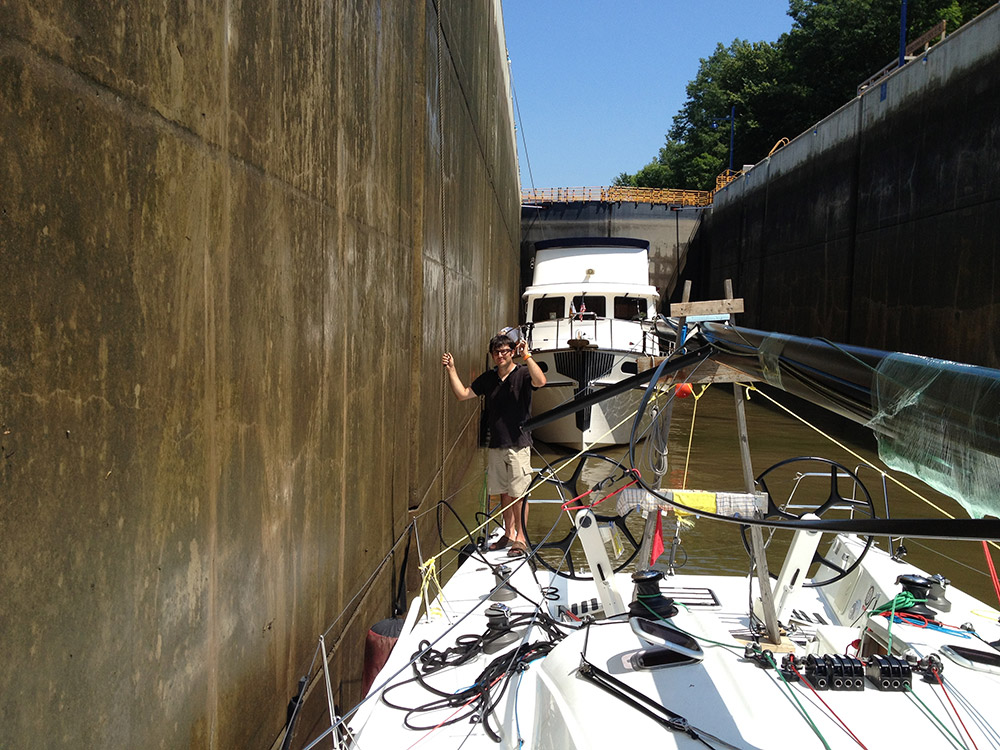How does a lock work?
When traversing connected navigational areas with considerable difference in water levels, you may encounter locks. These are used to move boats up or down from one level to another.
Locks operate on a simple premise. You drive your boat into a chamber with gates at each end. To raise the boat, water is let into the chamber until it is even with the level of the water to be entered. When the water reaches that level the gates on the new elevation side are opened and you drive out.
To go to a lower level, you enter the chamber and the gates are closed and water is let out until you are even with the lower level. The gates on that side are opened and again you drive away.
The lockmasters are responsible for the safety of vessels going through the locks. Their instructions should be followed precisely. You normally will call the locks on your VHF radio and make arrangements to enter the lock. (The VHF channel changes in different parts of the country but 13 is a good place to start if you do not already know the channel or it is not indicated on a sign at the entrance to the lock.)
You may, however, give two long and two short blasts from your horn and follow the light signals which are displayed at each entrance to the lock. Generally, they work similarly to a traffic light.
What does a red light at the lock mean?
A red light means stop, you cannot enter the lock and you must stay clear of any traffic about to exit the lock.
What does a yellow light at the lock mean?
A yellow light sometimes displayed means the lock is preparing for your entrance but still stay cautiously clear.
What does a green light at the lock mean?
A green light means the boat may enter the lock with caution and follow the instructions of the lockmaster.
Sound and light signals may be different in different parts of the country. Investigate beforehand.

Prior to entering the lock, you should have fenders rigged on both sides of the vessel. You should have crew in PFDs ready to handle lines and loop, not tie, them to the posts, bollards or lock wall ladder rungs on the side of the lock the lockmaster has indicated. Keep hands and feet clear of the boat and wall. Use a boat hook or paddle to fend off if necessary. Your crew handling the lines will have to adjust them as the water level rises or falls. Your lines should be at least twice the depth of the lock. Once secure in the lock, shut off your engine.
As soon as the water in the lock reaches the proper level, the gates are open and the lockmaster has indicated that you should do so, you should cast off lines and exit with caution.